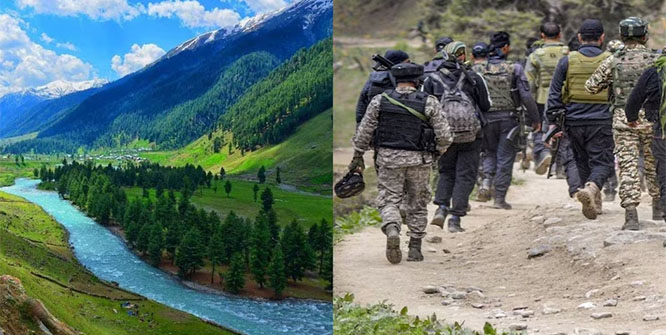Srinagar: The Prime Minister Narendra Modi-led union government’s explanation for the lack of security at the site of Tuesday’s deadly terrorist attack in Pahalgam has triggered widespread skepticism, with local officials and tourism stakeholders offering accounts that sharply contradict the government’s claims.
At an all-party meeting in New Delhi on Thursday, the Central government reportedly informed lawmakers that Baisaran meadow — where 26 civilians were killed — was not officially open to tourists until June. The absence of police and paramilitary presence, they argued, was due to this status.
However, investigations on the ground reveal a very different reality.
Baisaran meadow — popularly known as "Mini Switzerland" — remains accessible to tourists for most of the year. According to local tour operators, pony ride associations, and tourism officials, the area typically stays open except during peak winter months when snowfall blocks access.
"Tourists have been visiting Baisaran daily this season. No police clearance or special permission has ever been required," said Sheikh Mohammad Sultan, senior tour operator and President of the Indian Association of Travel & Tourism Experts (Kashmir chapter). "Nearly 70 percent of visitors to Pahalgam make it a point to visit Baisaran."
Further evidence lies in the operational signboard installed by the Pahalgam Development Authority at the meadow's entrance, listing an entry fee of ₹35 per person. Officials confirmed that this fee collection is outsourced annually through auction — a clear indication that the site was officially functioning and welcoming tourists at the time of the attack.
"Infrastructure projects have been developed for Baisaran tourism, and more are in the pipeline. Visiting Baisaran has never required security clearance or police authorization," a tourism official said on condition of anonymity.
The lack of security now stands under intense scrutiny.
The dirt track connecting Pahalgam town to Baisaran was reportedly unguarded, with only four unarmed personnel from an auxiliary wing of the Jammu and Kashmir Police stationed there. The nearest Central Reserve Police Force (CRPF) camp was nearly five kilometers away — a critical gap that likely delayed the emergency response.
According to official sources, the first CRPF responder reached the attack site almost an hour later, with reinforcements arriving more than ninety minutes after the assault had ended.
Locals like Waheed Ahmad, president of the Pony Operators’ Association in Pahalgam, expressed concern over the lack of vigilance despite Baisaran’s heavy tourist footfall.
"We have been taking tourists to Baisaran for decades without ever needing police permission. But given today’s environment, one would expect much better security," Ahmad said.
Eyewitness videos and photographs from just days before the attack show tourists visiting Baisaran in significant numbers, enjoying pony rides and the vibrant spring bloom — further undermining the Centre’s assertion that the area was "closed" to visitors.
The glaring contradictions have fuelled growing suspicions that authorities failed to adequately assess the threat level, despite intelligence warnings about potential attacks targeting Kashmir’s fragile tourist season.








Comments
Add new comment